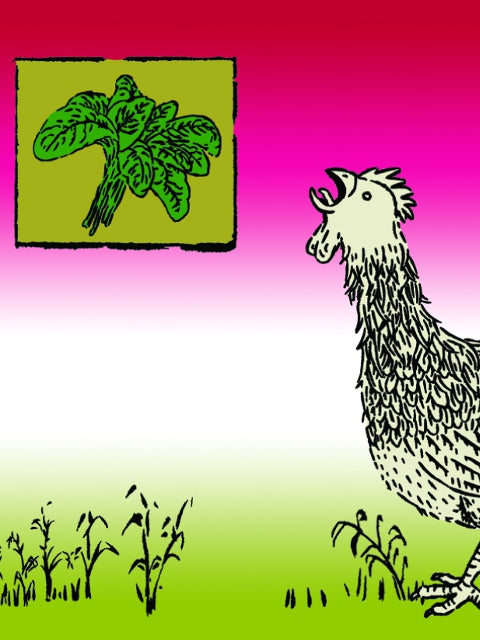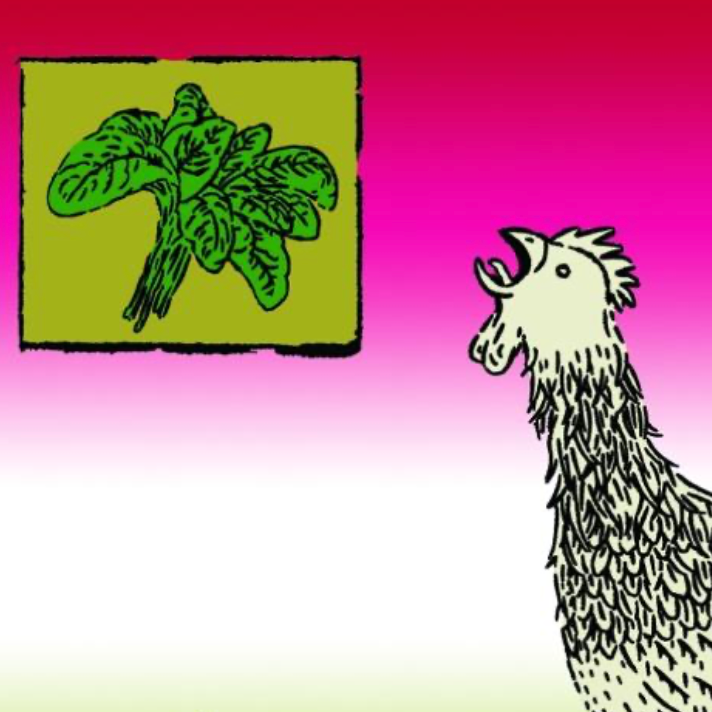 Last week, garlic seed cloves arrived at the farm, which got us thinking about fall crops. One of the most glorious greens of cool weather is, of course, spinach. Its beautiful, curvy, dark leaves have mesmerized across cultures and generations - from a French queen to Popeye the Sailor to modern day nutritionists.
Last week, garlic seed cloves arrived at the farm, which got us thinking about fall crops. One of the most glorious greens of cool weather is, of course, spinach. Its beautiful, curvy, dark leaves have mesmerized across cultures and generations - from a French queen to Popeye the Sailor to modern day nutritionists.
At the seed farm, we didn’t grow any spinach for seed this year, but we did overwinter a few rows in our hoop house for eating and, by April, were enjoying its sweet, crunchy, fresh leaves in our meals. It required little care over the winter and gifted us the present of a much desired, long awaited, very early season green. And, not just any green: spinach is prized for its health benefits, for good reason. In spring, after a long winter of storage crops and limited nutrition, eating garden-fresh spinach isn’t much different than eating a bouquet of vitamins.
History: Green Hand, a la Florentine. Spinach is thought to have originated in Persia about 2,000 years ago and the name is speculated to mean “green hand.” It made its way to Nepal and China and then, in the 11th century, made its European debut in Spain, when it was brought there by the Moors. This green came to Europe relatively late, compared to other common vegetables, but spread like wild fire and gained popularity in dishes across many cultures. In the 16th century, Catherine de’ Medici, queen of France, insisted that spinach be served with her every meal. De’ Medici was from Florence, which is where “a la Florentine” originates – to this day, the term basically implies – expect a lot of spinach.
Nutrition: Spinach is related to beets, chard, and quinoa – the Chenopods – a plant family which has secured the reputation of being one the healthiest foods around. Spinach has a lot of vitamins A, C, E, K, a few Bs, magnesium, manganese, folate, iron, potassium, folic acid, copper, protein, phosphorous, zinc, niacin, selenium, omega-3s, and many antioxidants. It’s particularly great – with its supply of iron and calcium - for hard-working vegetarians (like Popeye).
Growing: Most importantly, spinach like cool temperatures. It will germinate in temperatures between 40 F and 75 F degrees, and won’t be happy growing when it’s above 80 F. In our climate, it can be sown as early as 6 weeks before the last frost, or as soon as soil can be worked for a spring harvest (just be sure to prep your bed in the fall), and then successively every 10 days until mid-May. It can be re-sown again 6 to 8 weeks before the first frost, and with a little protection from row covers, can be harvested throughout the winter. Spinach can also be planted under protection in October or November for the earliest possible spring harvest.
Spinach likes moist and loose (for its deep tap roots) soil that is rich in nitrogen. Its seeds don’t store well, with germination rates going down significantly after a year, so we recommend either sowing fresh seeds, or sowing older seeds extra densely. Thin seedlings to 4 to 6 inches apart, to avoid overcrowding. If a warm spell sneaks up, be sure to keep spinach well watered, as it will help cool the temperature of the soil, but do keep in mind that too much water will encourage bolting.
Harvesting: Leaves that are 3 inches or larger are ready to be eaten. Carefully snipping the outside leaves only will encourage the baby leaves at the center of the rosette to grow with vigor. If harvesting a full “head,” cut the main stem just below the soil line.
Storage: Fresh leaves last longest in an airy plastic bag at the bottom of the fridge, but spinach can also be quickly blanched and frozen (this method brings out more of its natural sweetness!).
See Margaret Roach’s wise words on spinach
http://awaytogarden.com/why-i-plant-spinach-late-and-other-tasty-tidbits
Browse our spinach seed collection






